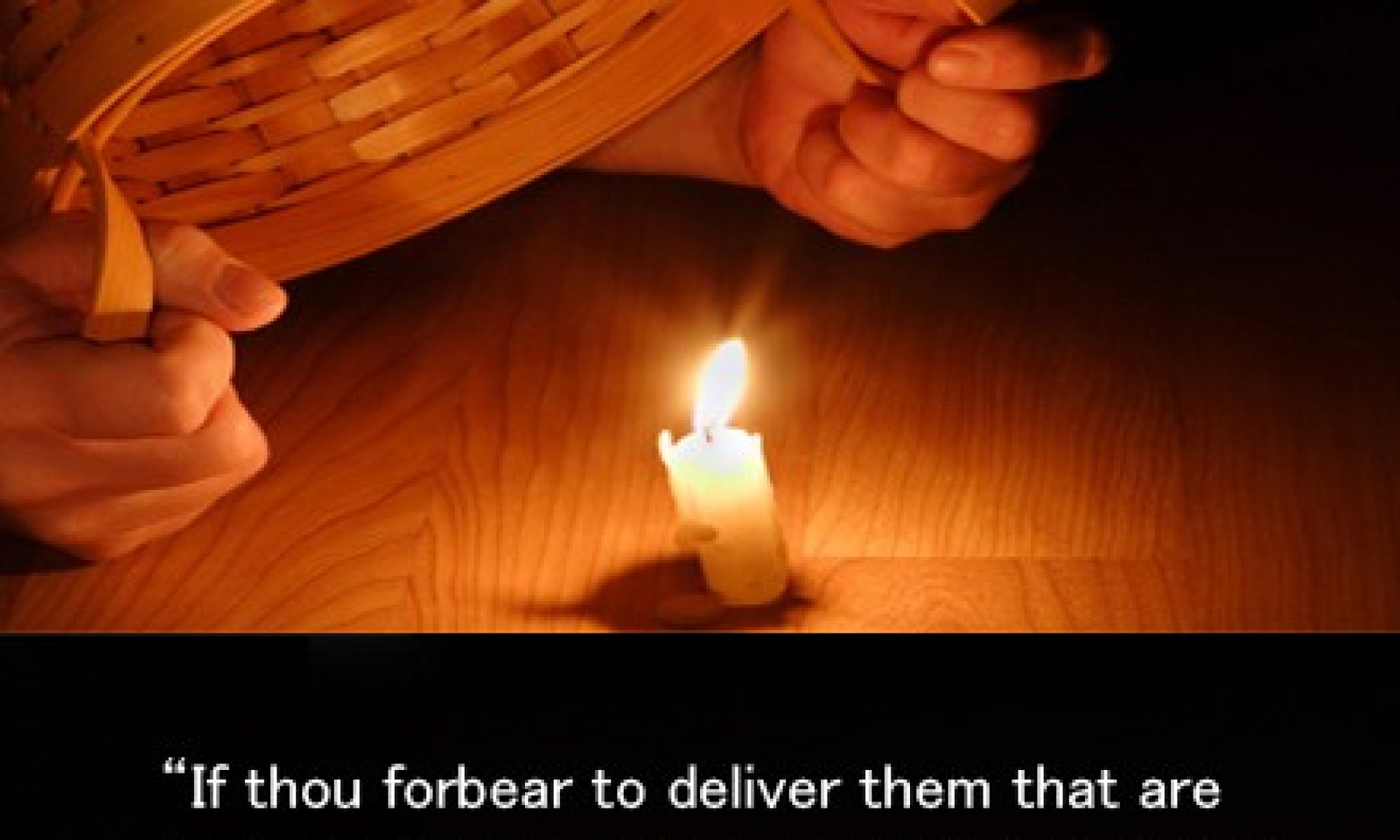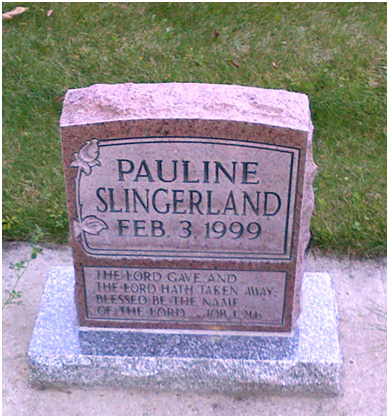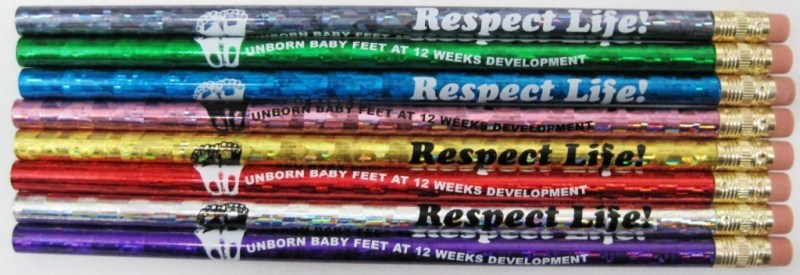Sunday night, quarter after eleven. I’m almost sleeping when the familiar chime of a text message startles me awake. Who is texting me late on a Sunday evening, I wonder. It’s one of my friends, letting me know that she is meeting with a couple tomorrow to discuss their options just one more time before their scheduled abortion on Wednesday.
“Please pray!” she pleads. All I can think of is to reply with a simple “Okay” before sending up a prayer for this couple, and for their child, now in imminent danger; begging God to change their minds, to bless the meeting so their eyes will be opened to what will really be done to their baby.
I’ve been involved in the pro-life movement for a little while already, but this specific request hits much closer to home. It won’t leave me, and the next morning I forward it to several close friends and family. At work I tell my boss and some co-workers about it, asking them to pray about this as well. I do my work, but my thoughts keep returning to this twisted situation. Midway through the morning, my boss calls me and several of my co-workers over to the transmission rebuilding bench. We stand in a circle and pray.
At lunch time I find out from my friend that the meeting did not go as we had hoped. It had quickly become clear that the woman, whom I will call Krystal, will keep the child and cancel the abortion… IF her boyfriend steps up to the plate and supports her. However, he is not supportive at all and does not want a child. He won’t consider adoption because, in his words, the options are limited to “keeping the child or aborting the child.” She is less sure. When the conversation turned to prenatal development, she started to cry. “I didn’t want to know that!” It was making her reconsider. She did not seem convinced at all that abortion is the right thing to do, but his attitude and refusal to shoulder his responsibility leaves us with little hope for the life of their baby.
My friend is told that the abortion is scheduled for Wednesday at the Kensington Clinic in Calgary, so we decide to try and reach them there, one last time. It will be our last chance to try save the life of the child. On Tuesday it is all I can think about at work and I pray throughout the day. This one precious life hangs in the balance. We still have a chance to make a difference.
Wednesday morning, we arrive at the Kensington Clinic a little after eight o’clock. We know that Krystal is desperately in need of support so the plan is to be there and offer whatever support we can. Because of a legislated ‘bubble zone’ that does not allow us near the clinic, the closest we can be is on the other side of the street. We each have a sign, one simply with the words “What do you need?”, another with a website for post-abortive women. It is bitterly cold, but already as we arrive, we are greeted by some ladies standing just outside the bubble zone, praying as part of the 40 Days for Life campaign. Holding our signs, we stand as close to the clinic as we can.
The first car pulls into the clinic parking lot. The couple waits for a few minutes before leaving the vehicle and walking toward the clinic door. “Lord, please stop them, make them change their mind!” A deep feeling of uselessness settles on me as they enter. A while later he leaves, to return in several hours and pick her up after their baby has been killed. A gorgeous late-model Audi pulls in. Obviously they aren’t there because they “can’t afford the child.” This scene is repeated over and over during the course of the morning. Each couple, every woman that enters that abortion clinic to have her baby torn apart, leaves us feeling even more powerless to stop the bloodshed.
“That’s them! I’m almost positive! She saw our signs and looked at me as they drove past!” My friend is quite sure that Krystal and her boyfriend are in the car that just came by. The late ninety’s Civic slowly drives past us, pulls into the abortion clinic parking lot, to then turn around and leave again. The man looks irritated, the woman cries while covering her face. Is that really them? Did she change her mind after all? While several other babies already lost their lives here today, maybe hers will live! A little ray of hope creeps in as we continue to stand there. Another friend joins us a bit later with a sign that says “Abortion is forever” and “Mommy can I live?” We discuss what just happened, and continue to stand on the sidewalk, hoping, praying…
A taxi pulls up right next to us, the driver motioning to the clinic, the girl nodding and paying him. I take my friend’s sign, she quickly walks over to the girl just exiting the taxi and offers her a “Precious Feet” pin. The girl waves her off and crosses the street. Again the clinic door opens and she disappears from view. Why? Why? Why? So many, so, so many! Somebody, stop this! Another couple enters, also resembling Krystal and her boyfriend, but from this distance we can’t be sure. Doubt enters our hearts again. “Oh Lord…” is all I can pray.
Noon comes and goes and no new people enter. Vehicles start arriving again, picking up daughters and sisters and girlfriends and wives. Each of them entered the clinic with their baby. Each of them leaves with a violated body, an empty womb. Later, a bio-waste truck will come and pick up the broken little bodies of the slaughtered innocent.
We stay for a little longer before deciding that, as there are no new people coming, we have done what we could and it is time to go home.
That night I get another message. “They had the abortion today.”
Words fail me. Their baby is dead—her little body torn apart by the suction machine. Maybe if we had been there a bit earlier… Maybe if we… Maybe… But then, Isaiah 55 comes to mind. “For my thoughts are not your thoughts, neither are your ways my ways, saith the LORD. For as the heavens are higher than the earth, so are my ways higher than your ways, and my thoughts than your thoughts.”
I can’t help but think that Krystal may have kept her child if her boyfriend had been a man and shouldered his responsibilities. Where are all the men? What kind of guy doesn’t support the mother of his child? What kind of guy thinks his future is more important than the life of his child or the well-being of his partner? So often women say that they cannot raise the child alone, as if it is obvious that the child’s father will not be there to help and support. I also can’t help but think that Krystal may have kept her child if we had reached her with the pro-life message earlier, if she had heard a persuasive case for the pro-life position prior to her crisis.
It becomes very clear. We have to reach these people before they schedule an abortion. We have to educate before people make these decisions. And we have to offer our homes and our hearts for girls like Krystal so, when their boyfriends and husbands pressure them to abort, they will have place to go to. We have to live the pro-life message, every one of us.
I have been pro-life all my life, but to my shame, until recently, I was able to live in my own comfortable little world, largely unencumbered by the fact that hundreds of my fellow Canadians were being slaughtered every single day. But that Wednesday, one precious life hung in the balance. We still had a small chance to make a difference. We did all we could, but to no avail. And then it hit me.
This is happening to 260 children every single day in our country! Every day, 260 Krystals enter an abortion clinic or a hospital and their children are decapitated, dismembered and disembowelled. More than anything, more than the sadness, the anger, the feeling of uselessness as we stood outside with our signs, I began to feel a deep sense of urgency. Every day that passes, babies are killed. Every day as we live our lives—going to school, church, or work, or enjoying time with friends—people are being killed across the country, behind sterile clinic doors. Far too often we say, “Maybe I’ll get involved later; I’m so busy now. I need some time to think about this. I’m not really ready to do pro-life stuff. I don’t know enough to be able to do anything.” But every day we push it off, babies die. What difference does it make to those babies if we are pro-life but do nothing about it? Edmund Burke once put it so simply: “The only thing necessary for the triumph of evil is for good men to do nothing.”
Over the past few years, more young people are joining the pro-life movement and becoming active about their conviction. This movement is making progress. We are changing hearts and minds and saving lives. With God’s blessing, we can end the killing, but we need your help! Public outreach may not be for everyone, but we can all do something. We can start by valuing our pre-born children as much as our born children. We can support the movement financially. We can call or write our politicians, urging them to do what is right. We can educate ourselves on pro-life apologetics, so that we are able to talk about abortion with our co-workers, friends and family. We can open our homes and churches to girls and women in crisis. And we can certainly pray for God’s blessing on this movement. Each of us has a role to play. Which is yours?
Think back to the picture I painted for you, the one we witnessed on that Wednesday. We saw how approximately fifteen babies were walked to their deaths, just at one clinic. Nation-wide, about 260 babies lost their lives through abortion on that day. And on Thursday. And on Friday… From the day we were at the clinic till the day this article is published, 3120 babies have been slaughtered. That is approximately the same as the number of people who died in the 9/11 attacks. The preborn are paying for our inaction with their lives! So let us ask ourselves: What are we doing to stop this? If we don’t do anything, who will? And if we don’t do something now, when will we do it?
I want to leave you with another quote from Edmund Burke: “Nobody made a greater mistake than he who did nothing because he could do only a little.”




